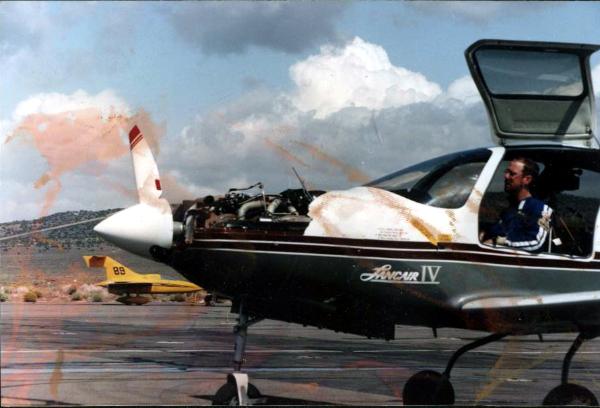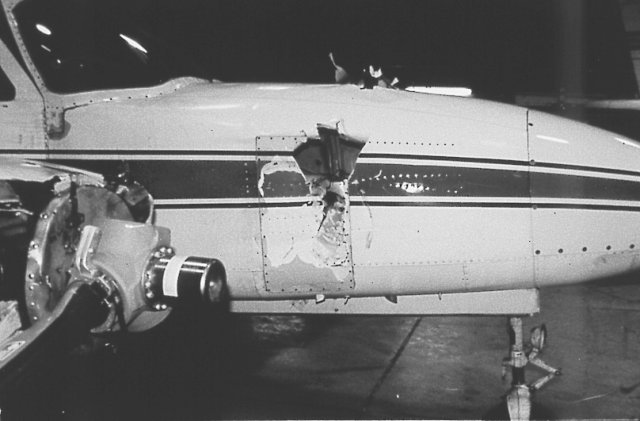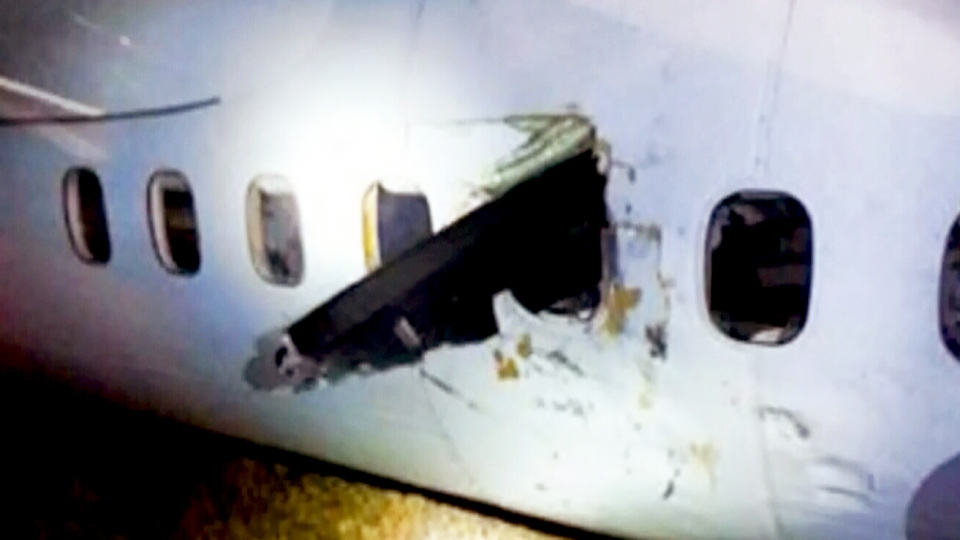On June 6, 2006, about 1930 eastern daylight time, a Cessna 172S, N2138W, incurred minor damage when a propeller blade separated during a missed approach at Lawrence Municipal Airport (LWM), Lawrence, Massachusetts. The certificated flight instructor and the certificated commercial pilot (under instruction) were not injured. Visual meteorological conditions prevailed. The local flight was operated on an instrument flight rules flight plan from Mansfield Municipal Airport (1B9), Mansfield, Massachusetts, and was conducted under 14 CFR Part 91.
According to the flight instructor, the flight was a proficiency check for the commercial pilot. The commercial pilot had just flown the VOR RWY 23 approach, and had initiated a missed approach 1/2 mile from the runway due to traffic landing in the opposite direction. Passing through 1,700 feet, a "loud pop" was heard and the airplane began to shake violently. The flight instructor immediately took control of the airplane and shut down the engine to prevent further damage. He then made a Mayday call with his intentions, and glided the airplane to a landing on runway 32.
A postflight examination of the airplane revealed that a McCauley Propeller Systems fixed-pitch propeller blade, part number 1A170E/JHA7660, serial number XH23030, had separated about 12 inches from the center of the hub.
The flight instructor also noted that during the airplane's preflight inspection, both he and the commercial pilot visually inspected the propeller blade, and ran their hands along the leading and trailing edges with no anomalies noted.
According to maintenance records, the most recent 100-hour inspection of the propeller blade was on May 10, 2006, about 53 operating hours before the incident. No anomalies were noted.
The remainder of the separated propeller blade was forwarded to the Safety Board for metallurgical examination. According to the Materials Laboratory Factual Report, the fracture was oriented in a chordwise direction, and there were crack arrest lines along the fracture face, typical of a fatigue crack, emanating from an indentation at the blade's leading edge. The crack propagated through approximately 50 percent of the fracture face. Another crack arrest band was noted beyond the first area, which had fibrous features typical of an overstress separation. There was no mention of corrosion in the report.
A chemical analysis of the propeller blade at Cessna Aircraft Company revealed that the hardness and chemical composition of the blade met the requirements of the applicable engineering drawing.





 ...seriously dunworrybout it.
...seriously dunworrybout it.